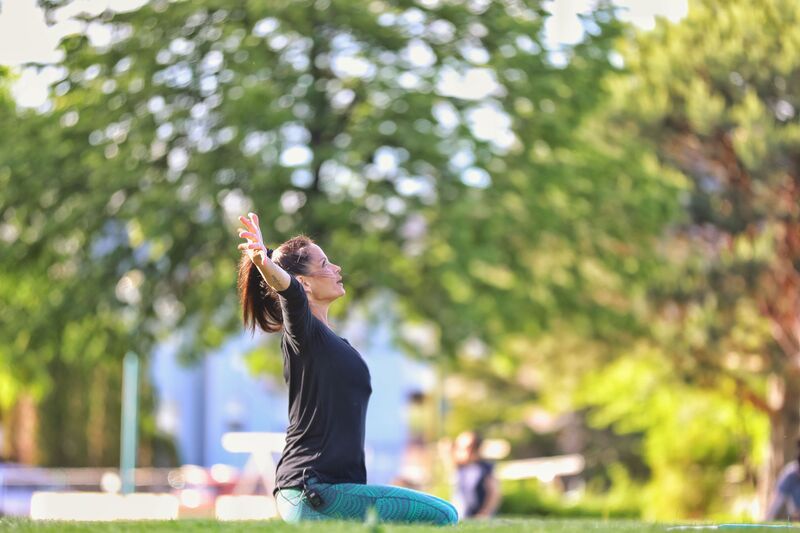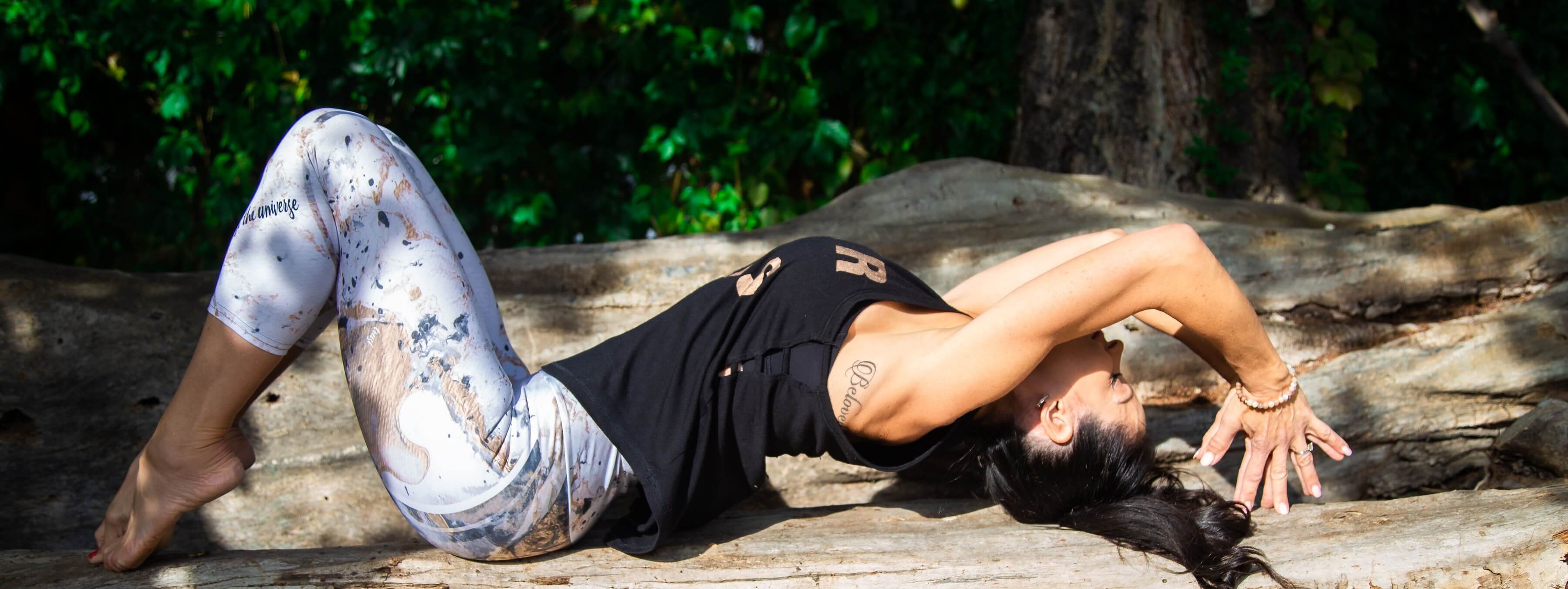Yoga for Stress Relief

Yoga is a mind-body practice that helps to relieve stress. When you are feeling the effects of stress, tension is stored in your body, making you feel tight and often causing pain.
Yoga combines physical poses (asanas),controlled breathing techniques (pranayama) and meditation (dhyana),all of which help to reduce stress by reducing tension and pain, as well as lowering blood pressure and heart rate.
Gain all of the benefits of yoga in regular, private yoga classes! Click to learn more.
Pranayama is the science of breathing in yoga. Pranayama for stress-relief works by integrating the disturbed organs with a smooth flow of oxygen throughout the body. If your yoga teacher does not instruct you to breathe in any particular way while moving through your asanas, the most simple and effective pranayama for your entire practice (except for the final minutes spent in Savasana) is to breathe slowly and deeply through the nostrils.
A few stress-relieving pranayama techniques:
Breath of Fire
(also known as “skull shining breath” or Kapalabhati. In Sanskrit, “kapal” means “skull” or “forehead” and “bhati” means “illuminating.”)
This type of breathing involves passive (normal) inhalations and powerful, rapid exhalations. This style of forced exhalation boosts brain functioning, improves respiratory heath and digestion, strengthens the abdominal muscles and reduces feelings of stress.
Nadi Shodhana
(aka Alternate Nose Breathing)
This kind of deep, focussed breathing regulates the nervous system, lowers blood pressure, improves lung functioning, lowers fear and anxiety, initiates the relaxation response and thereby reduces stress.
Bhramari Pranayama
(bhramari is a large black bee)
This type of breathwork involves making the sound of a bee – humming, basically – which sends a physiological message to the brain that you are free from danger. Studies show that humming improves sleep, reduces stress, anxiety, anger and tension, and that’s great news since you can easily do this just about anywhere! Bhramari breath has also been shown to massage the vocal chords, which stimulates the vagus nerve (running from brain to colon and is involved in involuntary function like heart rate and mood) causing your heart rate to gently slow and your mood to improve.
Some people find meditation – dhyana – to be an effective way to move away from stress and towards peace and calm. Meditation does not have to be done for a long period of time, nor does it mean you have to be void of thoughts. Our brains are wired to send thoughts, so EXPECT thoughts to enter your mind as you meditate; the key is to not attach yourself to these thoughts and get involved in any particular pattern of thinking.
If you are new to meditating, start by setting some time to be alone and find a quiet place. Ensure you are sitting or lying comfortably and surrounded by aromas and sounds you enjoy (some enjoy being in nature, others light candles, some play very quiet music in the background; many prefer silence).
Remember there is no magic formula, and meditation is in no way related to how much yoga you’ve done or what you know about it. Let your body and mind relax, release the things you are thinking about, and simply focus on your breathing. Start with a short amount of time (you can set a timer if you wish) and try to release any expectations about what will happen or how you will feel. Finally, know that each experience you have with meditating can be – and likely will be – different, so don’t give up. Find space and time in your life for short sessions and observe what happens.
Learn more about my services as a Kamloops yoga instructor on the Private Yoga Classes page.

